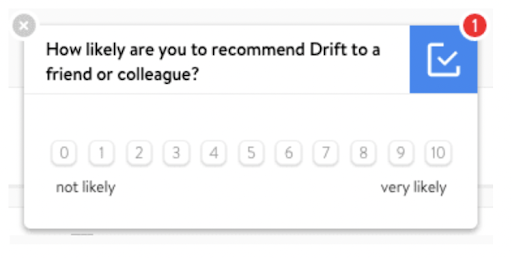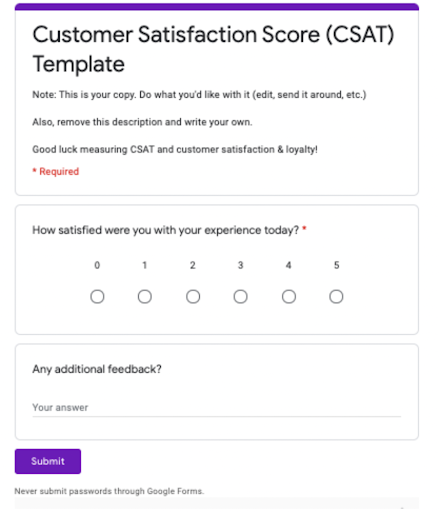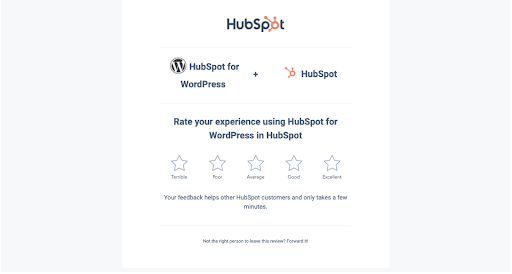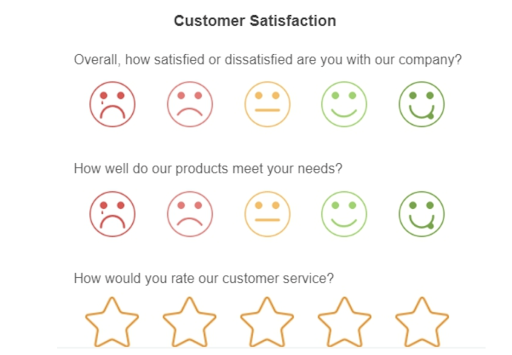Making sure your eCommerce customers are satisfied with your products and services is a top priority. Taking care of customer satisfaction means your business can drive more repeat customers and experience more positive referrals.
What is Customer Satisfaction?
The definition of customer satisfaction is the measurement that determines how well a business’s products or services meet customer expectations. Customer satisfaction is one of the most essential indicators of customer loyalty and purchase intentions. By nailing customer satisfaction, these insights help you to forecast business growth and revenue.
If you’re running a business that generates a steady stream of eCommerce orders, you may think that customer satisfaction isn’t too important. This type of thinking can be precarious, as the reality might be that some of your customers forgot to cancel their recurring subscriptions. Or, in the VoIP industry, customers might be thinking about alternatives to Vonage if they’re considering going to a competitor.
Quiet customers do not always mean satisfied customers. After all, they may be reluctant to complain about service they’ve received or a sub-standard product. Assuming that your customers are satisfied sets you up for a potential business disaster.
So what’s the best way to discover how satisfied your customers are?
CSAT (Customer Satisfaction Surveys) is a helpful metric for this conundrum. They inform you of precisely what influences the satisfaction among your customers and can be a metric for business success over time.
Let’s take a closer look at some fundamental elements of CSAT.
How to Track Customer Satisfaction with a CSAT Survey?
Small business VoIP service providers need to track customer satisfaction to ensure that their clients are happy with their service and will remain customers. A CSAT measures responses on a numerical scale, like 1-3, 1-5, or 1-7.

Source: drift.com
To calculate positive CSAT scores, work out the sum of the positive responses, divided by the number of responses times one hundred. This total represents the percentage of customers that are satisfied with their experience with your company.
You can customize a CSAT survey to establish the most relevant answers for your business needs. Here is a list of ideas for customer satisfaction survey questions to get you started:
Service-related Questions:
- How satisfied are you with the speed of the resolution?
- How simple was it to resolve your issue?
- How satisfied are you with the resolution?
- Do you agree or disagree that your issue was effectively resolved today?
Site-related Questions:
- How simple was it to create an account?
- How easy was it to complete your purchase?
- How easy was it to find the products you needed?
- How clear are our shipping and returns policies?
- How happy were you with the payment options?
- How likely are you to return to our website?
These types of questions are crucial in the eCommerce space. Providing the best payment gateways for eCommerce can make or break sales easily, so establishing if your customers are satisfied with the payment options on offer is a solid plan. Losing sales because your website doesn’t accept a specific payment type is a hassle to sort out, but it is rectifiable.

Source: HubSpot Blogs
Order-related Questions:
- How easy was the purchase process?
- How satisfied are you that your order arrived on time?
- How transparent was the tracking?
- How likely are you to purchase again from us?
Learning how easy your customers find the ordering process determines how seamless the ordering journey is. For instance, by analyzing your CSAT survey results, you may discover dissatisfied customers that abandon their carts due to order frustrations and tricky website navigations. This scenario can be alleviated by implementing automated abandoned cart workflows.
Product-related Questions:
- How much do you like the product?
- Do you feel product photos accurately represent the product?
- Was the color/sizing/option accurate?
- Were all the products you required in stock?
- Did you like the quality of the product?
Being out of stock can mean you’re losing out on sales, even though it might appear that your product is doing well in the market. You can tackle this element of your CSAT by implementing inventory management software to avoid stockouts. Though if you run a dropshipping website, you can forego any inventory management issues.
When creating CSAT questions, focus on the most important things to improve your business’s processes. Consider concentrating your CSAT around one element of the whole customer experience for a more focused view of specific areas.

Source: WPFusion
To accurately assess customer experience, you can also use other types of metrics to collect the data. There are a few different ways to do this:
- Open-ended questions (Why did you choose our virtual number service?)
- Yes/no questions (Were you satisfied with the service you received? Yes / No)
- Qualitative (Very satisfied, neutral, very unsatisfied, etc.)
- International symbols (emojis, stars, etc.)
- Numerical (How satisfied were you on a scale of 1-5, 1-10, etc.)
What is a Good CSAT Score?
Industries will vary, but typically, a good CSAT score is between 75-85%. A score of 75% represents four out of five customers rating your business with a positive score as opposed to neutral or negative.
Check out your competition in the same industry to see what their CSAT scores are, as this is the most relevant benchmark to your business.
When Should You Send a CSAT Survey?
Examples of some of the best times to send CSAT to customers include:
- A couple of days after purchase or signup for initial customer feedback.
- An unobtrusive in-app CSAT survey while customers are using your product.
- After each customer service session evaluates the success of that support channel.
- Following a significant product update, seasonal trends, or new product lines.
The best time to send your customers a CSAT is close to the time of deal-closing transactional emails. Approximately 15 minutes after an interaction is optimal to obtain a CSAT score (when the experience is fresh in your customers’ minds).
How to Improve Your CSAT Score?
There are a few ways to improve your business’s CSAT score. Tools such as interactive live chats and chatbots via PBX cloud solutions deliver instant customer support at crucial buying stages. Providing your customers with the tools to self-service their questions is a great way of improving their experience and your CSAT score.
When it comes down to it, though, improving your CSAT score isn’t too complicated. Your survey results should tell you all the information you need to know to improve your customers’ experience. By positioning relevant questions, you’ll soon know if your delivery speed is too slow, your website is too clunky, or whether your customers think your shipping costs are too high.

Source: Proprofsdesk.com
Tips on Running a Successful CSAT Survey
1. Survey Appearance
The timing of your CSAT isn’t everything. How it appears is vital too. Apply your brand colors, ensure it’s mobile-friendly, and A/B test different formats like banners, email surveys, and widgets to see which format is the most visually appealing.
2. Relevant Questions
Make sure you send CSAT surveys with relevant questions at appropriate times. You wouldn’t typically use a CSAT for finding out how much your customers know about the MapReduce process. A good example question is, “How would you rate the support you received?” following a support session works well.
3. Limit The Questions
Try to hit the sweet spot for the number of survey questions. Surveys that take longer than 20 minutes to complete are a turn-off for most people, so keep it short and to the point.
4. Frequent Surveys
Follow up with the customer segment every six to 12 months to identify whether your CSAT score has improved.
5. Automate It
You can save a lot of time by automating CSAT survey delivery. Use email marketing software to schedule customer satisfaction surveys with incentives for completing them. You can even use these automated emails to include helpful customer information. For example, if your business receives numerous questions such as, “What does PRM stand for?” add it in for added value.
6. Company-wide Focus
Customer satisfaction must be a company-wide focus to be successful. Implement CSAT surveys as part of your company’s value propositions and mission and make all employees aware of their importance.
7. Advertise It
Discovering positive CSAT scores is a great opportunity to tell your audience about it and deliver confidence in your brand that your customer service is exceptional.
8. Act on It
The feedback you receive from the CSAT will help you make changes and then prioritize another area. Ensure that you combine the CSAT answers with customer reviews for a thorough overview and track ongoing results using a tool such as HubSpot CRM integration.
Time to Implement CSAT Surveys?
Customers with positive CSAT scores are the best source of advocacy for your business. Use these customer segments to your advantage. Cross-sell or upsell your products or services using eCommerce automation marketing tactics, and nurture them effectively to ensure that they remain positive about your business.
Understanding your customers’ journey and seeking ways to enhance it is crucial to meeting their needs and for your business’s overall successful growth. High customer satisfaction levels help with:
- Retaining customers
- Attracting new customers
- Increasing customer loyalty
- Improving product offerings
- Boosting your brand’s reputation
- Making smart business decisions
Isn’t it time your business started creating CSAT surveys?
Share your thoughts in the comments below!








